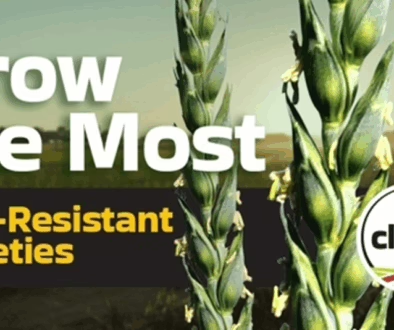Practices to Protect Germination in Malt Barley
Germination is the number one spec when it comes to malt barley. If your grain won’t sprout, it won’t make malt, and if it doesn’t make malt—it’s headed for the feed bin. That’s a tough hit when you’ve managed everything else right.
Read more: Know Your Malt Barley Specs: Ensuring Marketability
Here’s the good news: Saskatchewan barley growers can take specific harvest and storage steps to preserve germination and protect their shot at malt premiums.
Pre-harvest sprouting is the silent killer.
Canadian malt barley varieties are bred to sprout easily—great for maltsters, risky for farmers. Just a few days of mistimed rain or heavy dew while the crop is in swath or standing can initiate sprouting, also known as chitting. That starts breaking down starches and enzymes long before you harvest.

Read more: Chit Happens: Understanding Pre-Harvest Sprouting
Start with harvest timing.
Malt barley is considered safe to store at or below 13.5% moisture, but it may not be best to wait until the crop in the field reaches 13.5%. If you’ve got access to drying either through aeration or a grain dryer, consider harvesting early. Aeration is more limited in how much moisture can be removed from the crop, especially as the season progresses. The longer mature barley stays in the field, the higher the risk of pre-harvest sprouting, staining, and weather damage.
But beware: drying your grain too aggressively can also ruin germination. The golden rule is “low and slow.”
- Keep grain temperatures below 42°C during drying.
- If using heated air, avoid quick temperature jumps.
- Only dry in 4% moisture drops per pass.
Read more: FAQs on Grain Storage & Drying from PAMI
To manage chit:
- Favour straight-cutting over swathing when possible.
- If swathing, don’t start until at least 30% moisture.
- Time harvest around the weather to avoid prolonged wet conditions.
Storage matters, too.
Once it’s in the bin, your barley is still very much alive. Poor storage management can cause germination losses—even after you’ve harvested everything right.
Tips to lock in quality:
- Cool grain to below 10°C as soon as possible.
- Use aeration to manage moisture and temperature.
- Turn grain regularly.
- Monitor hot spots or pockets of higher-moisture grain.
High moisture + high temps = microbial growth and heating = dead kernels.
Read more: FAQs on Grain Storage & Drying from PAMI
Don’t forget RVA testing.
Even if germination looks fine at harvest, pre-harvest sprouting can affect storability. RVA (Rapid Visco Analysis) testing helps detect hidden risks that can cause germination to crash in storage. It’s worth getting done—especially in a sketchy weather year.
To sum it up: protecting germination starts in the field, carries through the dryer, and ends in the bin. A few simple practices can mean the difference between feed and malt—and that means more dollars in your pocket.
Download the Fact Sheet: Rapid Visco Analysis (RVA) Testing for Barley Factsheet – Manitoba Agriculture
MCA_Barley-RVA-factsheet-v2-Digital



